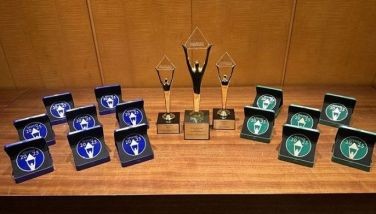A hydropower dam

ZURICH CITY — The city of Zurich is considered as the economic and financial center of Switzerland. To many people around the world, including us Filipinos, we normally associate Switzerland to their famous “secret” bank account system. The first thing we remember about secret Swiss bank accounts are related to the recovery of alleged ill-gotten wealth supposedly stashed by the late President Ferdinand Marcos and his family.
But more than the famed Swiss secret banking system, Zurich has been lately recognized as among the cities around the world that has been successful in energy conservation.
The city of Zurich shares the distinction of having saved on energy consumption by as much 30 percent. This information is announced in tarpaulins that dotted key areas at the Zurich International Airport. The eye-catching announcement made us wonder how an economic center like Zurich, the biggest city in Switzerland, can save so much energy, but is also one of Europe’s bustling metropolis.
My question was answered as we walked through the airport and saw another tarpaulin with a picture of several offshore windmills operating in open seas in Switzerland. Obviously, the secret of Zurich City’s success in energy conservation measures is backed by their efficient use of renewable energy like windmills and other alternative power sources.
With Lake Zurich at its doorsteps and the rivers Sihl and Limmat traversing it, Zurich is called the “city of water.” The water of Lake Zurich — as our city tour guide would later tell us — boasts of being pure that it can be used even for drinking aside from being a popular place for diving, swimming, and paddling activities. They even have water police to make sure their waters are protected.
German-speaking Swiss people of Zurich boast of the purity of their tap water as the safest in the world. They brag to tourists here they can even drink from a fountain in a park or in any public place. There are more than 1,200 fountain structures depicting various figures around the city.
Water is obviously a major natural resource of wealth of the Swiss people. As a matter of fact, hydropower remains Switzerland’s most important domestic source of renewable energy. Hydropower used to account for almost 90 percent of domestic electricity production in Switzerland at the beginning of the 1970s. This fell to around 60 percent in 1985 following the entry into operation of Switzerland’s nuclear power plants, which now accounts for around 55 percent.
This, we found out from Swiss ambassador to the Philippines Ivo Sieber who gave us a briefing on the energy mix in Switzerland before we left Manila last week.
Sieber, however, noted that Switzerland is beginning to gradually shift away from nuclear-fired plants after the Fukushima nuclear leak incident triggered by the devastating earthquake and tsunami that struck Japan in 2011. In broad strokes, Sieber talked about how Switzerland has stepped up on its clean energy program that promotes the reduction of carbon emissions and more efficient use of electricity.
Sieber cited Switzerland’s environment-friendly policy on the use of renewable energy sources. We learned here that there are 579 hydropower plants all over Switzerland. Each power plant has an average capacity of at least 300 kilowatts (kw), which can produce an average of around 35,913 gigawatt hours (GWh) of electricity a year.
Around 11 percent of Switzerland’s hydropower generation comes from facilities on bodies of water along the country’s borders. Two-thirds of energy produced by hydropower plants in Switzerland comes from their mountain ranges, or the Swiss Alps that we also associate with their country.
We were taken to one of these hydropower plants in the city of Locarno in Ticino, about a three-hour drive from the city of Zurich. On our way to the site, we passed through the Gotthard Pass and were awed by the sight of several waterfalls cutting the Swiss mountain range.
We drove through the Swiss mountain range under several tunnels, the longest a 17-kilometer stretch, before we reached the city of Locarno where Verzasca hydroelectric dam is situated. This Swiss dam gained international fame after it was featured in the Hollywood series of “James Bond” movies. In the opening scene of the 1995 movie “Golden Eye,” James Bond (played by English actor Pierce Brosnan) jumps off the Verzasca Dam.
It is also called the Contra Dam. It is a 220 meter, or 720 feet high hydroelectric dam. Also known as the Locarno Dam, it is an arch dam on the Verzasca River in the Val Verzasca of Ticino.
To reach the dam, we have to drive through a winding road going up to the mountain. The two-lane, steep winding route reminded us of the zigzag road going up to Baguio City, our very own summer capital in the Philippines.
Visiting the site, we read from the brochure that the dam supports a 105-megawatt (MW) power station that contains 3 x 35 MW Francis turbines and generates an average of 234 GWh of electricity annually. Water from the reservoir at 470 meters (1,540 feet) above sea level is transferred to an underground power station downstream at 193 meters (633 feet) above sea level.
The dam builder and owner, Verzasca SA, has an 80-year concession on the power station that will expire in 2046. It was built in 1961 and became fully operational in 1965. The dam owners started to lease access to the dam, soon after “Golden Eye” movie was released, to a commercial bungee jump operator.
According to the bungee jump operator, over 10,000 people have jumped from the topmost part of the dam. It was also later featured in the long-running reality TV series “Amazing Race” where contestants were made to do the bungee jump challenge.
When we arrived at the site of the dam, we could hear the ear-piercing scream from a jumper. From a distance, we saw the jumper was tied to a platform that juts out in the middle of the concrete dam structure. The rope bounces the jumper up and down more than three times. Only after the rope finally stops bouncing that the jumper was pulled up back to the platform.
Although it was drizzling, there were quite a number of jumpers, young men and women, lining up and waiting for their turn. Of course, they first have to go through a crash course from bungee jumping supervisors on how to do it right, lest a jumper could plunge to death.
For 13 Swiss francs, or about P700, one can do this adrenalin rush adventure. No one from our group though dared to do a “James Bond” leap at this Swiss hydropower dam.
- Latest
- Trending























